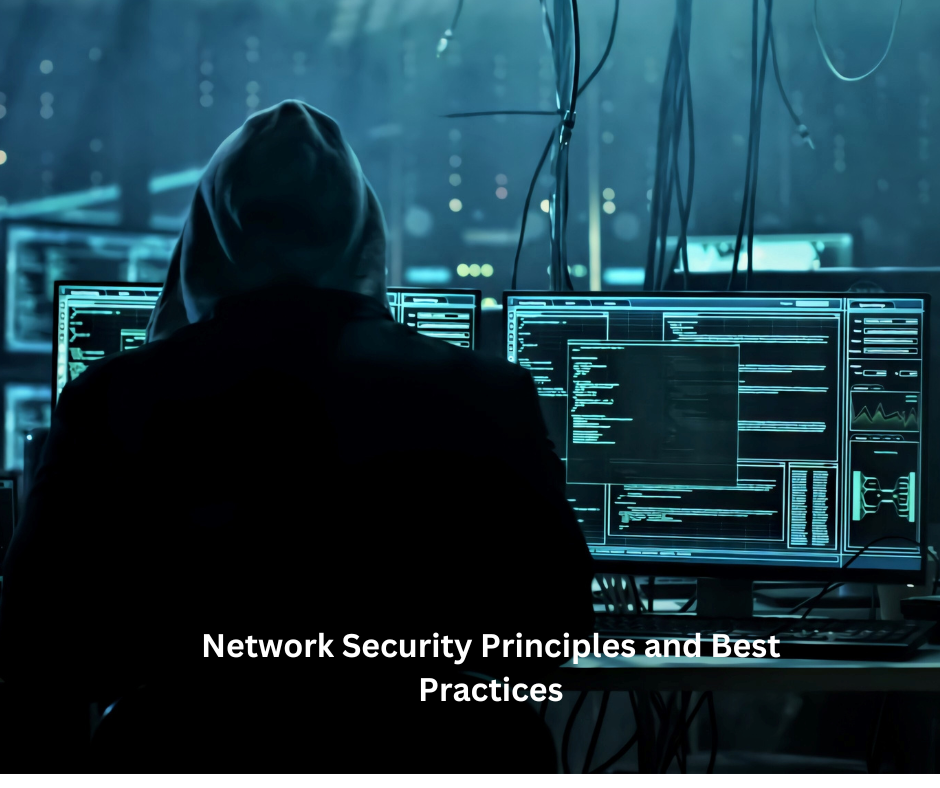In today’s digital world, network security is more important than ever. Organizations of all sizes must protect their networks against cyber threats that can cause significant financial and reputational damage. This guide covers essential network security principles and best practices to help safeguard your network infrastructure.
1. Understanding Network Security
1 What is Network Security?
Network security involves implementing policies, processes, and technologies to protect the integrity, confidentiality, and availability of data and resources across a network. It encompasses a broad range of practices designed to prevent unauthorized access, misuse, or denial of service.
2 Why is Network Security Important?
Network security is crucial for protecting sensitive information from cyberattacks, ensuring compliance with legal requirements, and maintaining the trust of customers and stakeholders. A robust network security strategy helps prevent data breaches, financial loss, and damage to a company’s reputation.
2. Core Principles of Network Security
1 Confidentiality
Confidentiality makes sure that sensitive information is only accessible to authorized people. This principle is vital for protecting personal data, intellectual property, and other sensitive information from unauthorized access.
2 Integrity
Integrity refers to the accuracy and completeness of data. Ensuring integrity means that data cannot be altered or tampered with by unauthorized entities. This principle is critical for maintaining the trustworthiness of information.
3 Availability
Availability ensures that network services and resources are accessible to authorized users when needed. This principle is essential for maintaining business continuity and ensuring that critical operations can proceed without interruption.
4 Authentication
Authentication is the process of verifying the identity of users and devices before granting access to the network. This principle helps ensure that only legitimate users can access network resources.
5 Authorization
Authorization decides what an authenticated user is allowed to do on the network.This principle helps control access to resources based on the user’s role and permissions.
6 Non-repudiation
Non-repudiation ensures that actions taken on the network can be traced back to a specific user or entity, preventing them from denying their involvement. This principle is crucial for accountability and auditing purposes.
3. Common Network Security Threats
1 Malware
Malware is harmful software created to damage or gain unauthorized access to a network.It includes viruses, worms, ransomware, and spyware. Malware can cause significant damage to systems and compromise sensitive data.
2 Man-in-the-Middle (MitM) Attacks
MitM attacks involve intercepting and altering communications between two parties without their knowledge. This can lead to unauthorized access to sensitive information and compromise the integrity of communications.
3 Insider Threats
Insider threats occur when employees or other trusted individuals misuse their access to the network to cause harm. These threats can be intentional or accidental and are often difficult to detect.
4. Network Security Best Practices
1 Implement Strong Access Controls
Access controls are essential for limiting access to network resources based on user roles and permissions. Use strong, unique passwords and set up multi-factor authentication (MFA) to improve security.
2 Regularly Update and Patch Systems
Keeping software and systems up to date is crucial for protecting against known vulnerabilities. Regularly applying patches and updates helps prevent attackers from exploiting outdated software.
3 Use Firewalls and Intrusion Detection/Prevention Systems (IDPS)
Firewalls act as a barrier between trusted and untrusted networks, filtering traffic based on predefined security rules. IDPS can detect and respond to suspicious activities on the network, helping to prevent intrusions.
4 Encrypt Sensitive Data
Encryption is the process of converting data into a code to prevent unauthorized access. Encrypting sensitive data both at rest and in transit helps protect it from being intercepted or stolen.
5 Conduct Regular Security Audits
Regular security audits help identify vulnerabilities and weaknesses in your network security posture.
6 Educate Employees on Security Awareness
Human error is a major cause of security breaches.Provide regular training to employees on security best practices, including how to recognize phishing attempts, handle sensitive information, and use secure passwords.
7 Monitor Network Traffic
Continuous monitoring of network traffic helps detect unusual activities that may indicate a security breach. Use network monitoring tools to track and analyze traffic patterns, and set up alerts for suspicious behavior.
8 Implement a Data Backup and Recovery Plan
A comprehensive backup and recovery plan ensures that critical data can be restored in the event of a security incident. Regularly back up data and test recovery procedures to ensure they work as intended.
9 Segment Your Network
Network segmentation involves dividing a network into smaller, isolated segments to limit the spread of an attack. This approach helps contain potential breaches and protect critical systems from being compromised.
10 Develop and Enforce Security Policies
Security policies provide guidelines for how network security should be managed within an organization. These policies should cover areas such as acceptable use, access controls, incident response, and data protection. Regularly review and update policies to ensure they align with the latest security threats and best practices.
5. Advanced Network Security Techniques
1 Zero Trust Architecture
Zero Trust is a security model that assumes no one, whether inside or outside the network, can be trusted automatically.It requires strict verification for every person and device attempting to access network resources, significantly reducing the risk of unauthorized access.
2 Endpoint Security
Endpoint security involves securing individual devices (endpoints) that connect to the network, such as laptops, smartphones, and tablets. Implementing endpoint security solutions helps protect these devices from malware, unauthorized access, and other threats.
3 Virtual Private Networks (VPNs)
VPNs provide a secure, encrypted connection between a user’s device and the network, protecting data from being intercepted during transmission. VPNs are particularly important for remote workers accessing the network from unsecured locations.
4 Multi-Factor Authentication (MFA)
MFA adds an extra layer of security by requiring users to provide two or more forms of verification before accessing the network.
5 Security Information and Event Management (SIEM)
SIEM solutions aggregate and analyze security data from across the network, helping to detect and respond to threats in real-time. SIEM systems provide a comprehensive view of network security and enable faster incident response.
6. Responding to Security Incidents
1 Incident Response Plan
An incident response plan details the actions to take when a security breach happens. It should include procedures for detecting, containing, and eradicating threats, as well as recovering affected systems and communicating with stakeholders.
2 Conducting a Post-Incident Review
After a security incident has been resolved, it’s important to conduct a post-incident review to identify what went wrong and how similar incidents can be prevented in the future. This review should involve analyzing logs, interviewing key personnel, and updating security measures as needed.
3 Legal and Regulatory Considerations
Depending on the nature of the security incident, there may be legal and regulatory requirements for reporting breaches to authorities and affected individuals. Ensure that your incident response plan includes steps for complying with these requirements.
7. Conclusion
Network security is a complex and ongoing challenge that requires a proactive approach. By understanding the core principles of network security and implementing best practices, organizations can significantly reduce their risk of cyberattacks. Regularly updating security measures, educating employees, and staying informed about emerging threats are key to maintaining a secure network environment. For those looking to enhance their skills and knowledge, Cyber Security Training in Noida, Delhi, Mumbai, Indore, and other parts of India provides valuable resources and expertise to help professionals stay ahead in this critical field.



